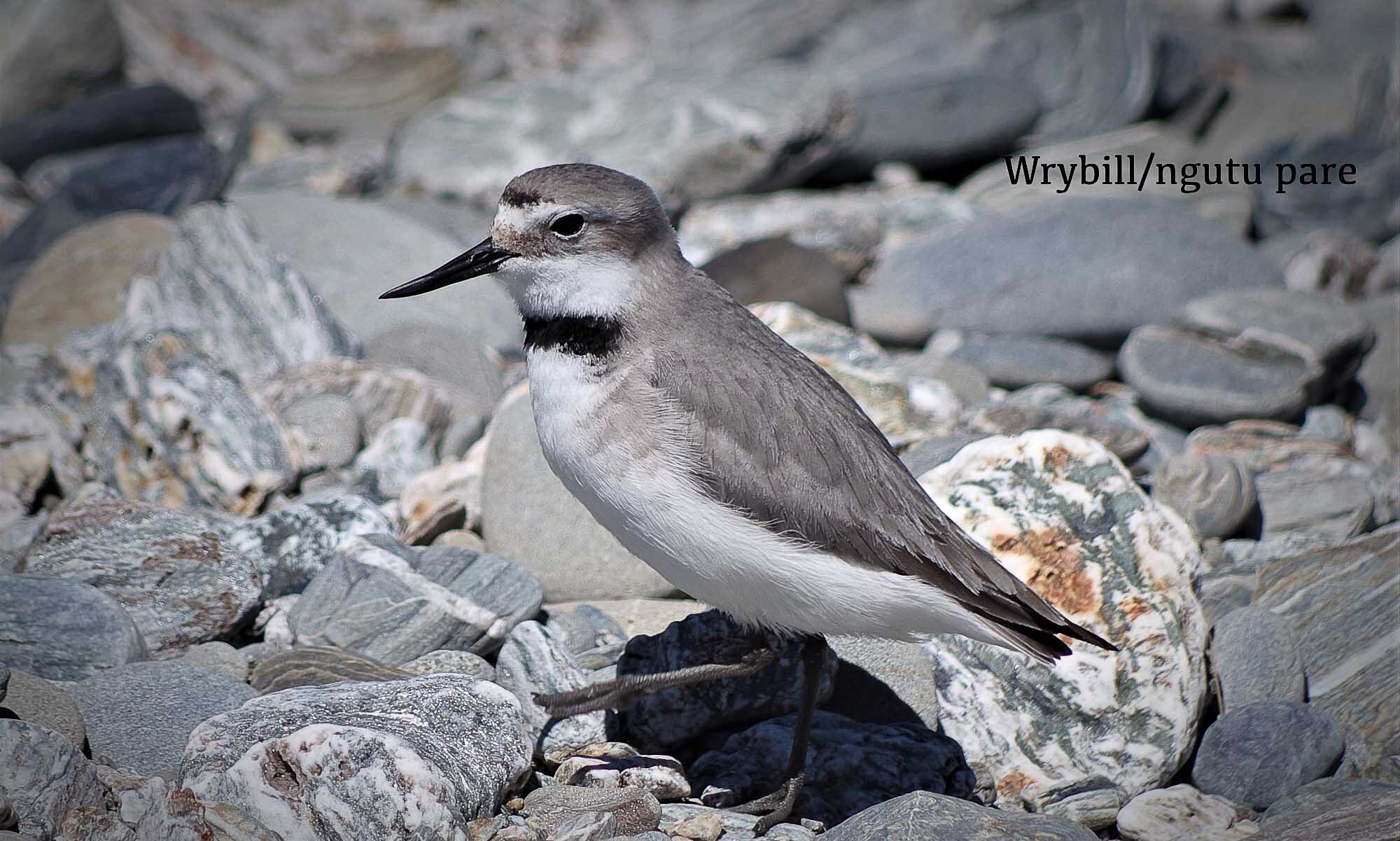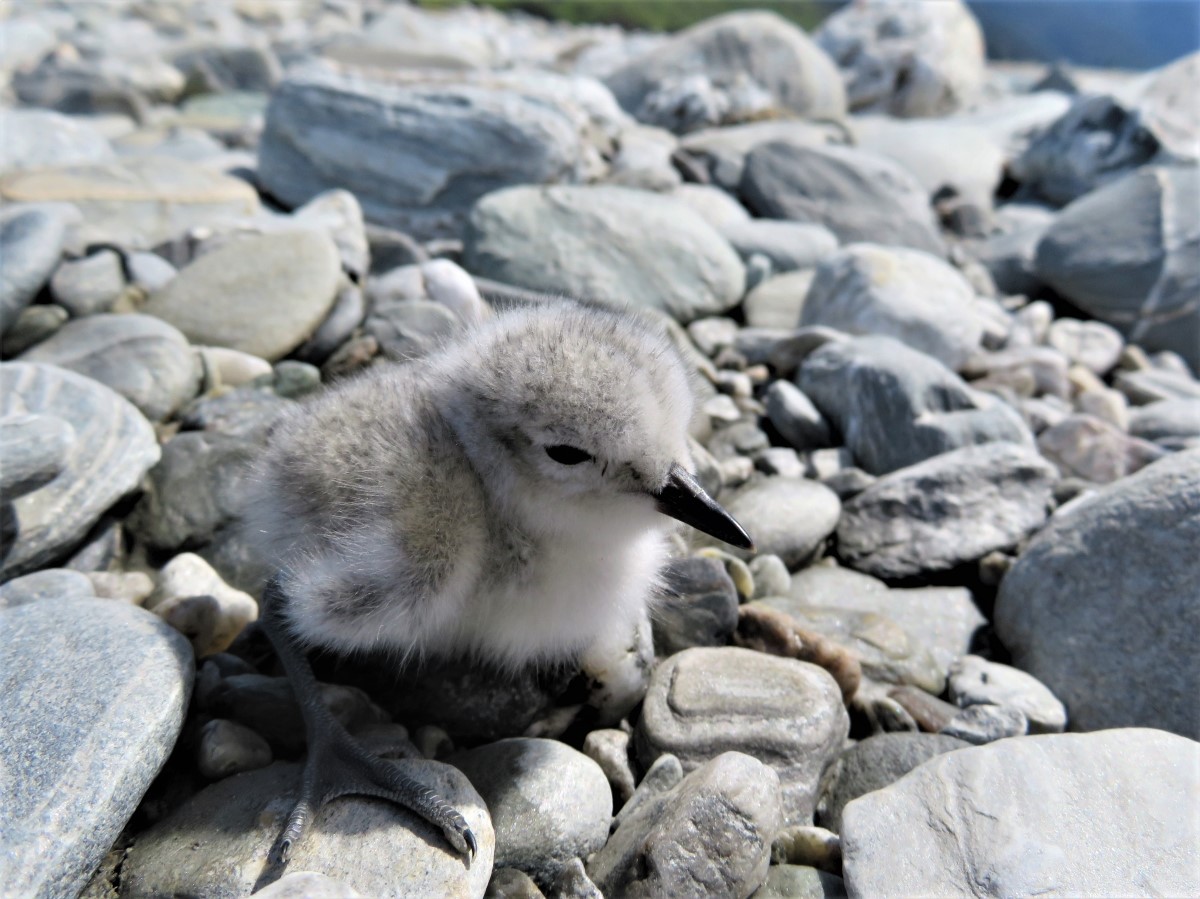Makarora/Makarore Wilkin/Otanenui Braided River – An Underestimated Biodiversity Hotspot
Target threatened species: Wrybill / Ngutuparore, Black-fronted tern/ Tarapirohe , Banded dotterel / Pohowera, Black-billed gull / Tarapuka, South Island Pied-oystercatcher / Torea and as of August 2021 Black stilt/ Kaki
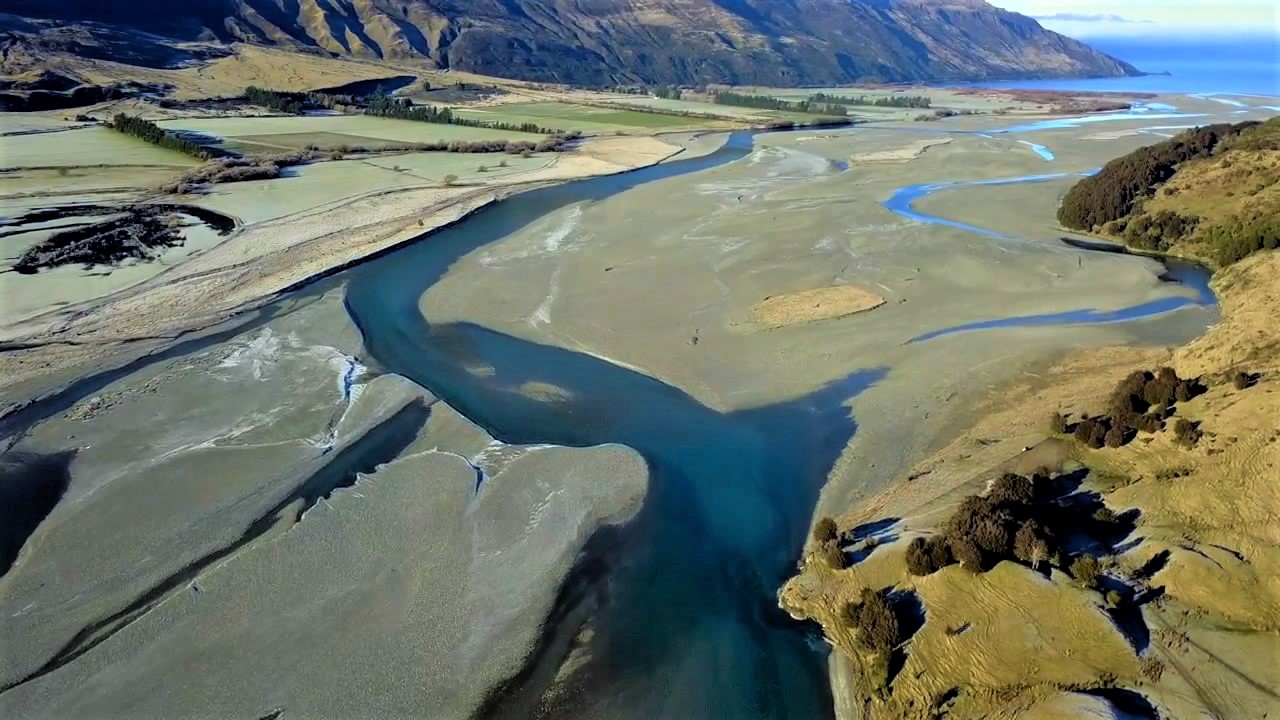
The headwaters of the Makarore River are located within the Otago Region’s Mount Aspiring National Park on the eastern flanks of the Main Divide (Southern Alps) near Haast Pass, the saddle between the Makarora and Haast River valleys. The river flows south into the northern end of Lake Wanaka, 300 m above sea level, after passing the small community of Makarora. Braiding of the river begins at Boiler Flat, approximately 304 m above sea level and flows south west joining the Blue and the Young Rivers, then extending its braid plain further meeting its confluence with the Wilkin/ Otanenui River, continuing to the delta before reaching Lake Wanaka. The riverbed is typical of braided rivers in the South Island, containing multiple channels with islands of gravel between them, on which birds nest. Adjacent interface wetland habitats and agricultural land also provide opportunities for bird foraging and roosting including waterfowl species.

The Aspiring Biodiversity Trust implements and manages a braided river bird survey and monitoring programme which commenced during September 2017.
Survey to date has shown that the Makarora braided river is an important site for indigenous braided river birds such as black-fronted tern, wrybill, black-billed gull, South Island pied-oystercatcher, banded dotterel and for the occasional visit from a pair of rare black stilt’s (as of August 2021), maintaining a diverse and complete braided river avifauna.

Cumulative pressures faced by braided river birds such as flooding, native avian predators i.e. Southern black-backed gull (not only introduced mammalian predators such as stoat, hedgehog and rat) and recreational use have also been highlighted. Not forgetting additional coastal pressures at overwintering sites.
For further details ABT’s 2017/2018 Makarora braided river bird surveys are available here
This survey and ongoing ABT monitoring guide and inform future conservation management to help protect, restore and safeguard Makarora’s braided river bird breeding sites.
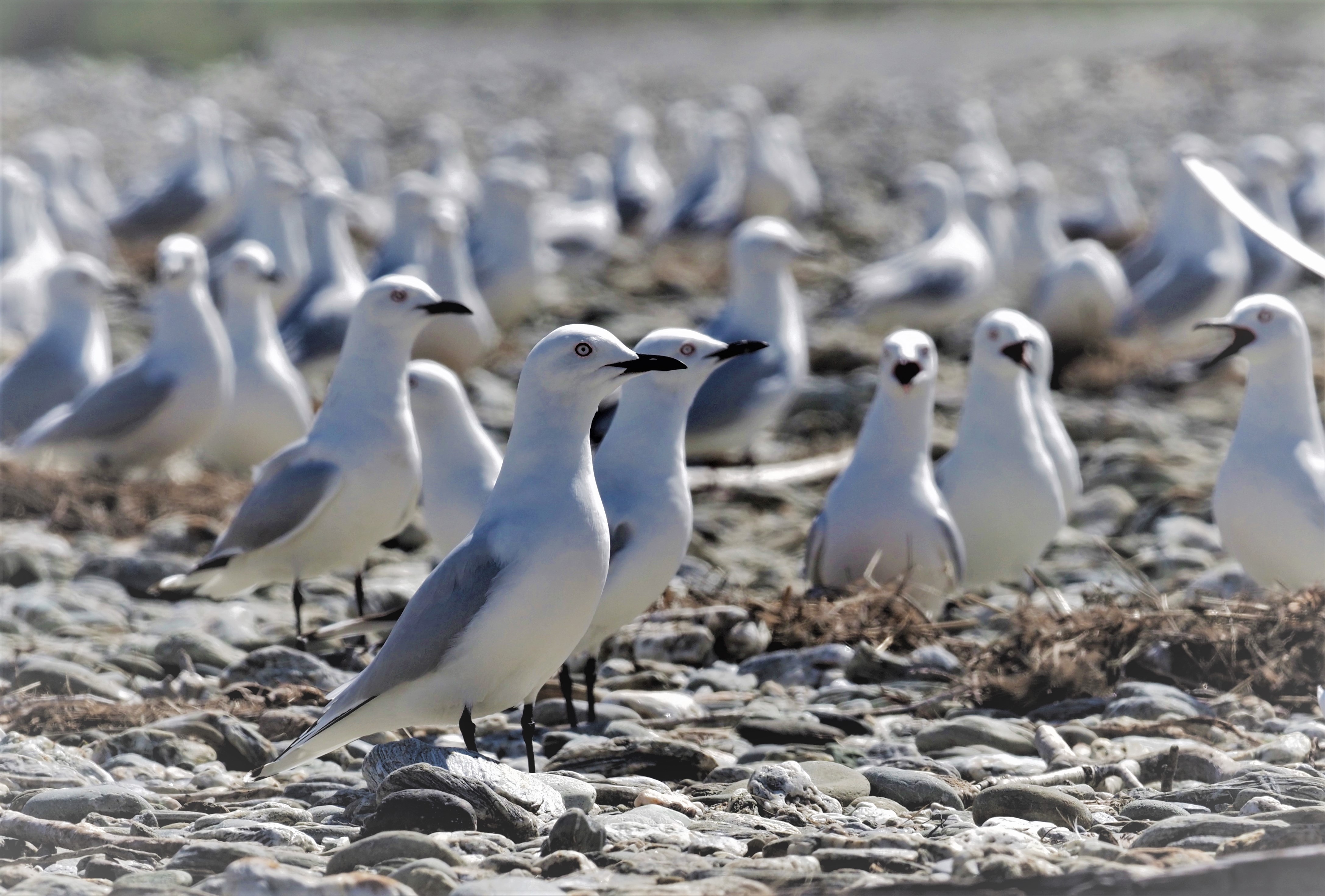
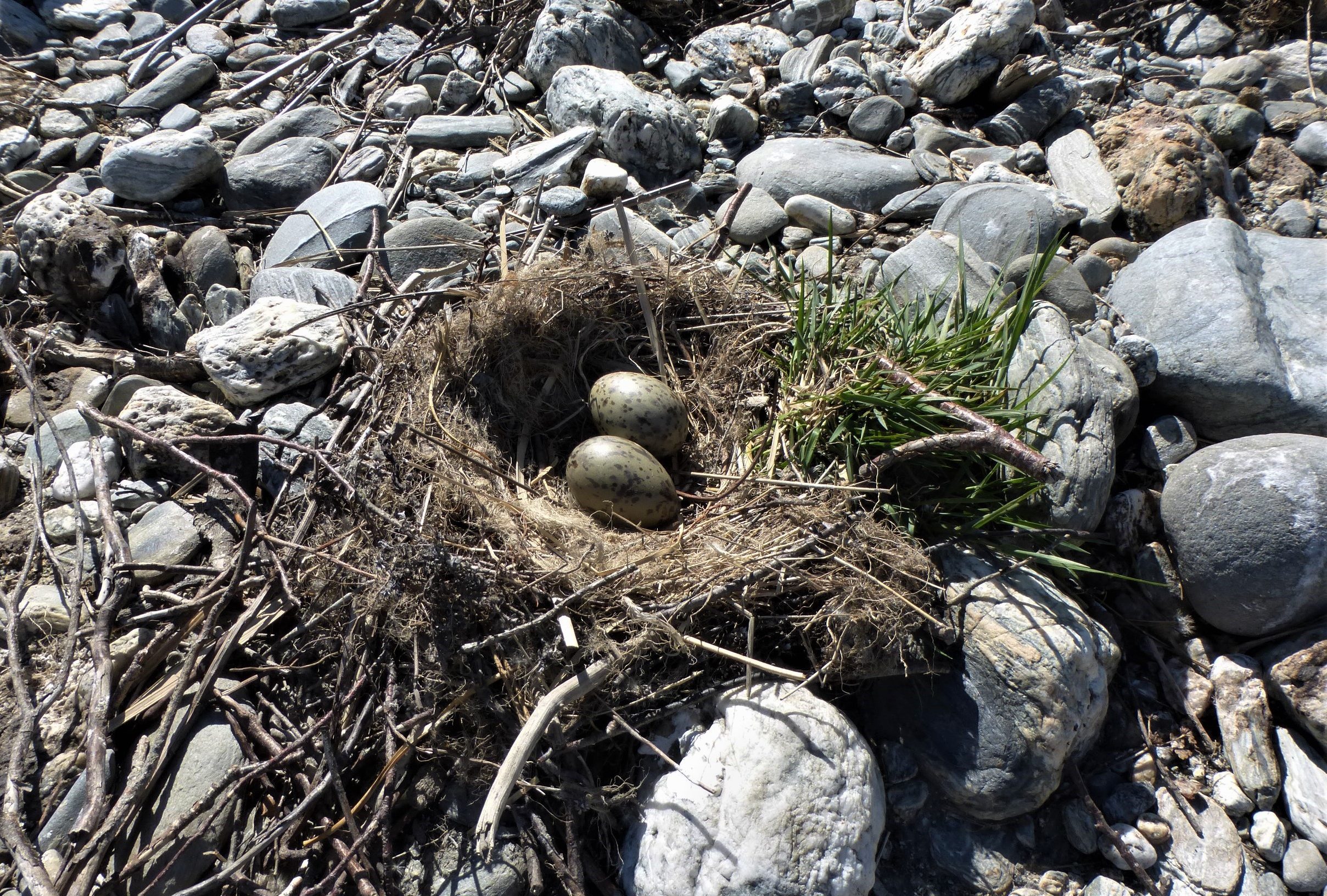
The initial installation of ABT’s invasive mammal predator control strategy (which continues to be developed) commenced on the Makarora River early April 2018. Further details can be found on the news page. The trapping results from April 2018 – August 2018 are found below. Indicating rapid uptake by invasive predators such as stoat and hedgehog.
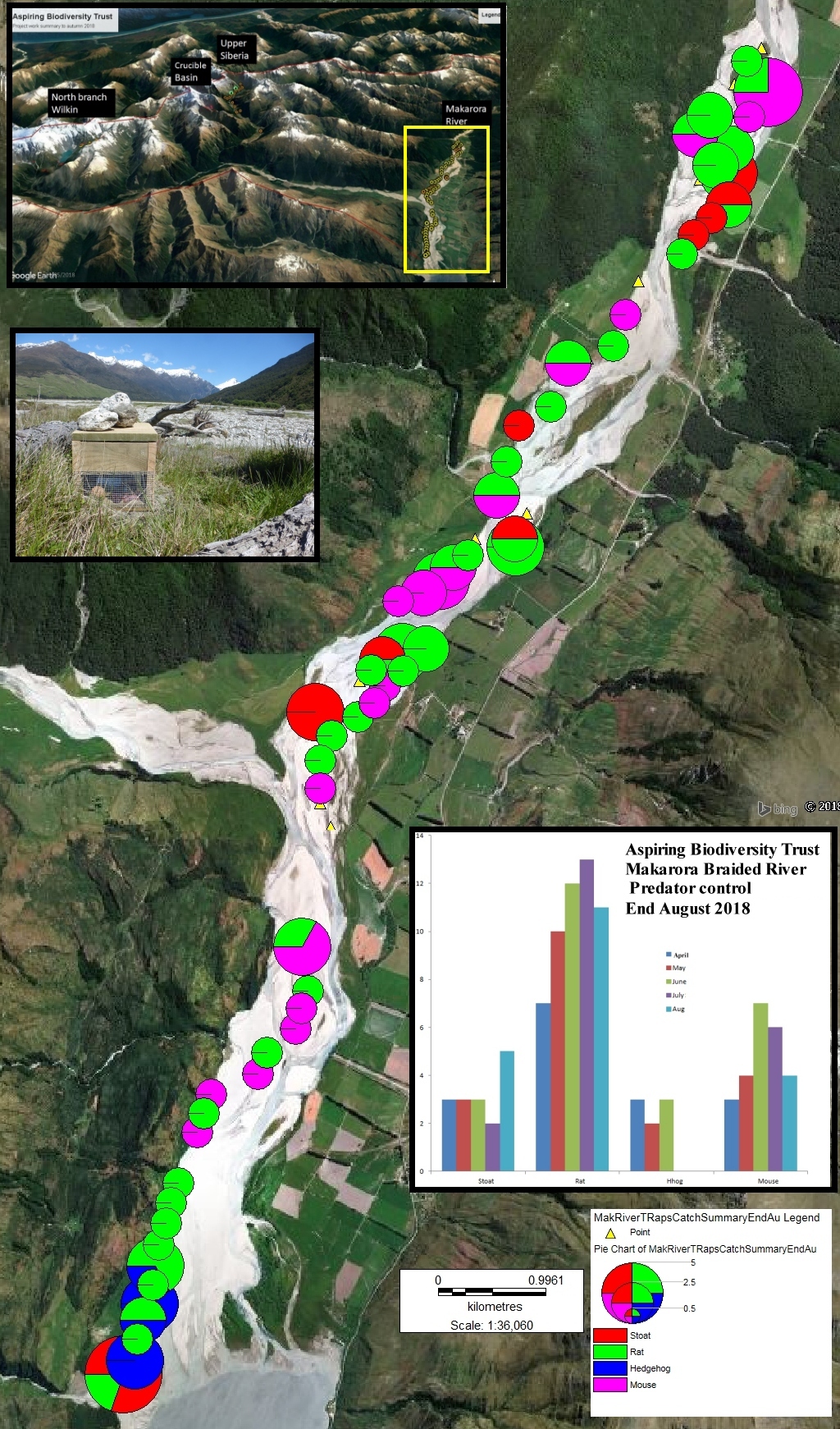
Invasive mammal trapping result continued from April 2018 – February 2019 summarised within spatial representation below.
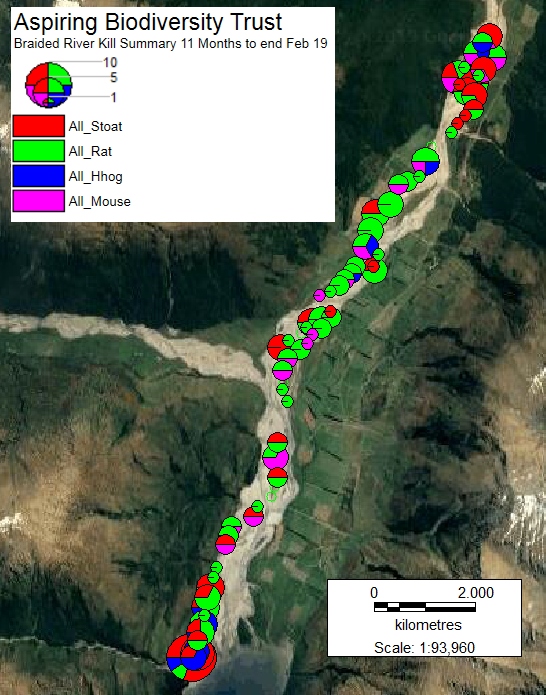
Overview of invasive mammal predator (stoat, rat, hedgehog, mouse) control catch data for the Makarora River up to June 2020 (below). The gap during March-May is representative of the Covid 19 lockdown.
 The Aspiring Biodiversity Trust are proud to be working in collaboration with BRaid the National Braided River Aid and Conservation Network. BRaid initially met with ABT on site to film a promotional video for the Makarora/ Wilkin River (July 2017) to the delta at Lake Wanaka. Three years later ABT were invited to present at the 2020 BRaid Symposium (Lincoln University) – Advances and Emerging Issues in Managing Braided River Ecosystems.
The Aspiring Biodiversity Trust are proud to be working in collaboration with BRaid the National Braided River Aid and Conservation Network. BRaid initially met with ABT on site to film a promotional video for the Makarora/ Wilkin River (July 2017) to the delta at Lake Wanaka. Three years later ABT were invited to present at the 2020 BRaid Symposium (Lincoln University) – Advances and Emerging Issues in Managing Braided River Ecosystems.
ABT’s presentation at the BRaid Symposium (2020) contributed to a welcome collaboration with Land Information New Zealand (LINZ) as an important sponsor towards continuity and progression of important braided river bird protection, restoration and predator control connectivity for multiple threatened species within the Makarore/Otanenui catchments.

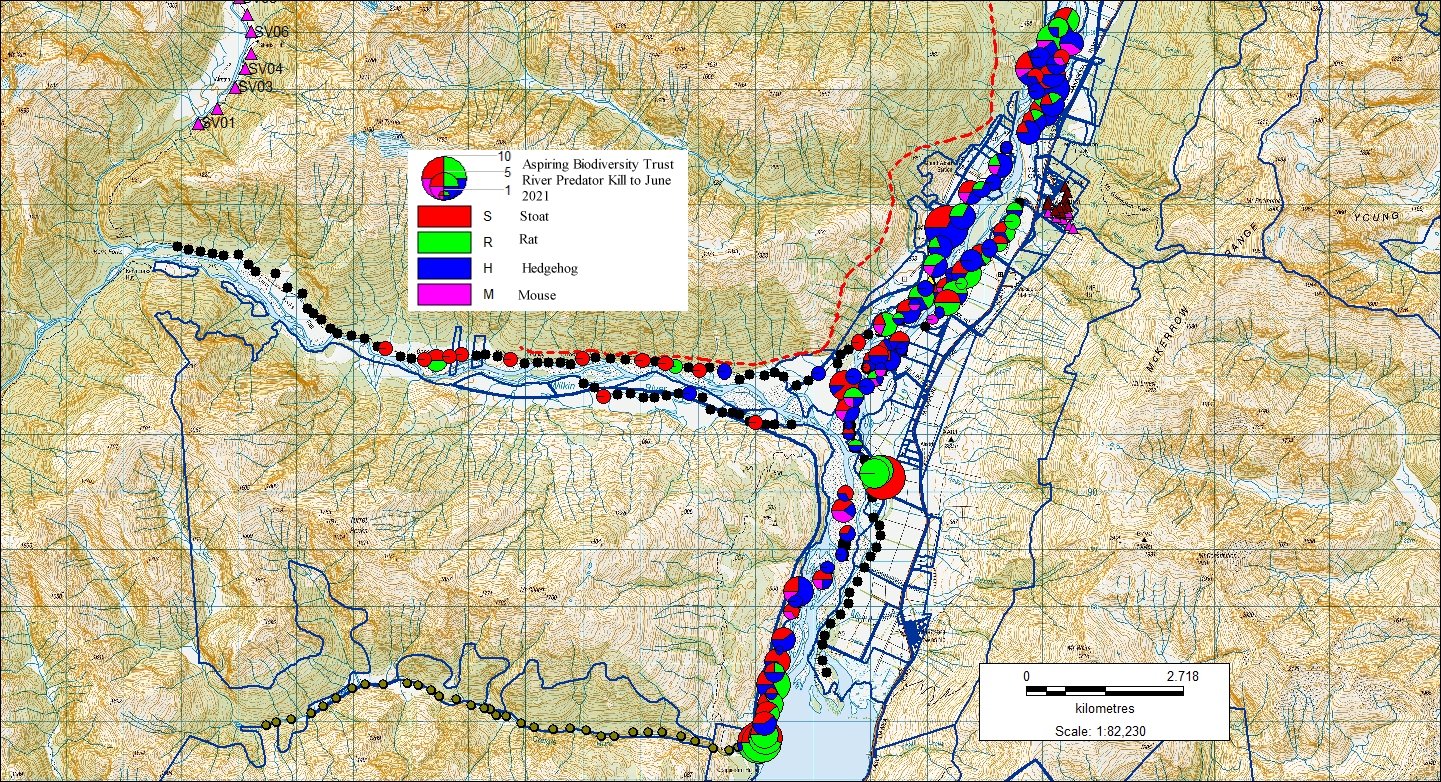
NEWS 8 July 2021: ABT are delighted to have been nominated for the 2021 Cawthorn River Awards as one of three finalists!
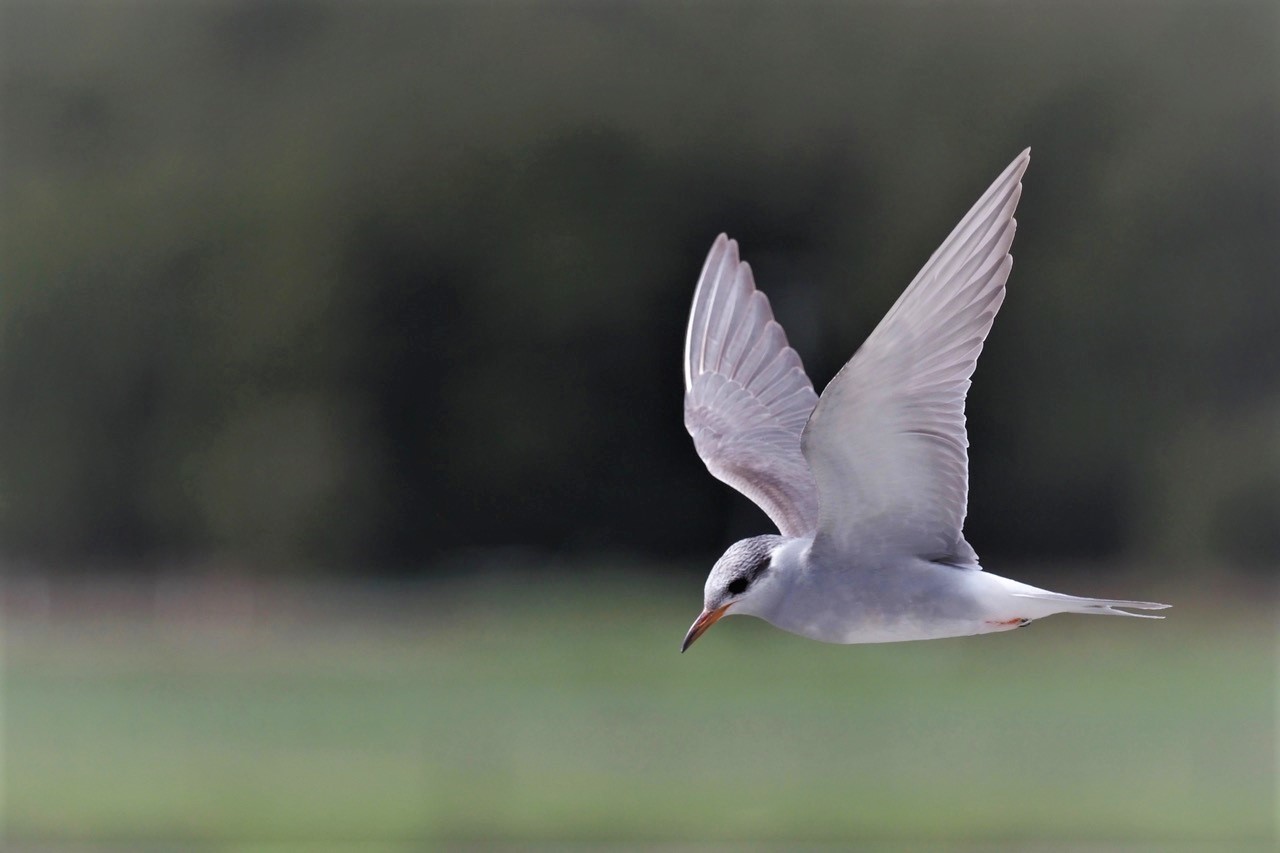
Further information
Management and Research Priorities for New Zealand Braided Rivers (2016).
